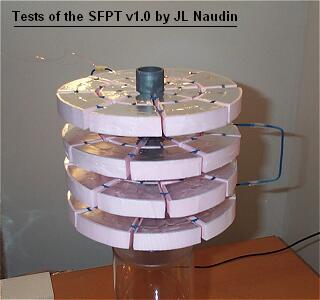

The
Serrano's Field Propulsion Thruster
SFPT
v1.0 measurements
Built and tested by
Jean-Louis Naudin
created on January
19, 2002 - JLN Labs - Last
update February 19, 2002
All
informations in this page are published free and are intended for
private/educational purposes and not for commercial applications
On October 5, 2000, the Hector Serrano's patent WO 00/58623 " Propulsion device and method employing electric fields for producing thrust " has been granted. I have already built and tested successfully ( on January 19, 2002 ) this Electric Field Propulsion device patented by Hector Serrano from Gravitec Inc.
Today I have done some additional tests and measurements about the LFPT thrust versus the Voltage.

The
Serrano's Field Propulsion Thruster v1.0 specifications
|
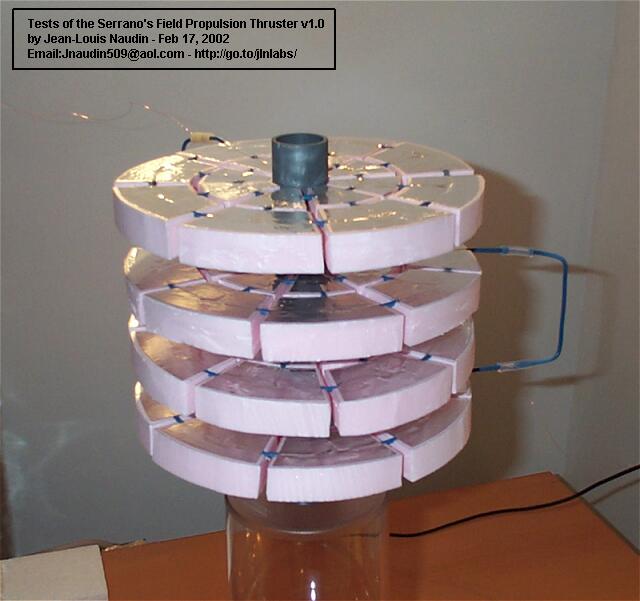
Tested apparatus description :
The SFPT v1.0 is placed vertically on a Roberval balance and fully insulated with a cylinder plastic box has shown in the photo below. The High Voltage ( bipolar ) is sent through thin wires coming from the top and the bottom.
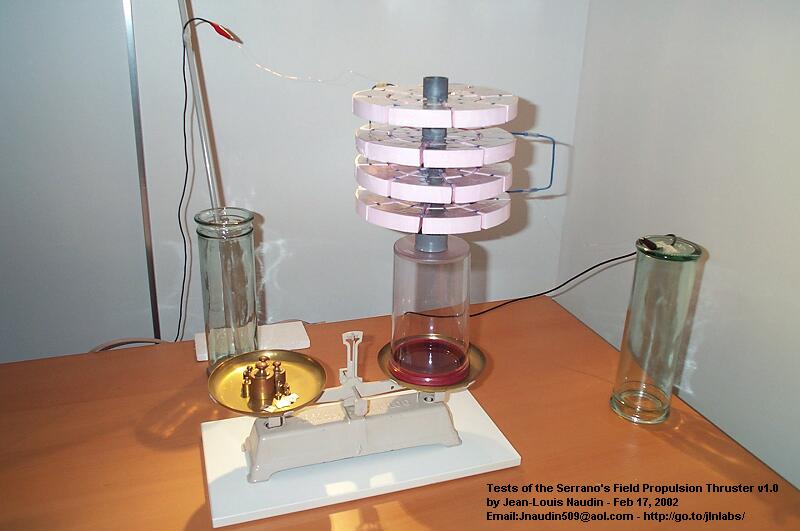
TESTS RESULTS ( 02-17-02 ) :
When the HV power supply is switched on, the Field Propulsion Thruster v1.0 goes upward. Five points have been recorded, see below :
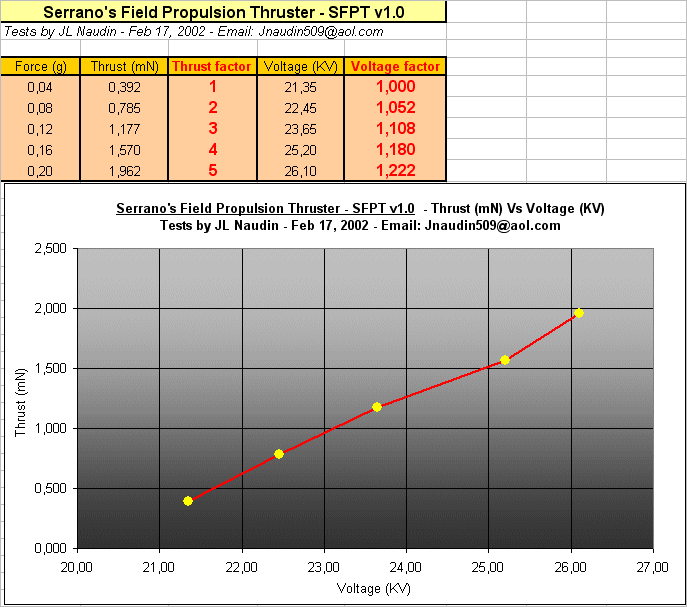
Comments : The resulting thrust is weak, this is due to the low dielectric constant difference producing a weak non-linearity between the two dielectrics used in this experiment ( K=2.53 for the Polyfoam XPS and and K = 1 for the Air ).
Look at the columns Thrust Factor and Voltage Factor in the spreadsheet above. The most important point to notice in this experiment is :
When the voltage is 1.22 more the resulting thrust is multiplied by 5.
I have noticed during the measurements of the thrust on a beam balance that the Force was greater at the beginning of the test than after a while. This was effectivly due to the ionization effect between the layers. The air used as the low dielectric was initially neutral and non conductive and at the end of some tests became ionized due to the presence of nitrogen oxides and ozone. The result was that the thrust became weaker at the end of the test due to the losse of the non-linearity. The thrust is greater and permanent with the rotating version. In the rotating version the non linearity is kept because the air used as the dielectric is constantly changed by the motion of the device.
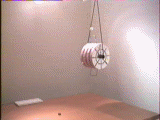
Some documents references :
See also :
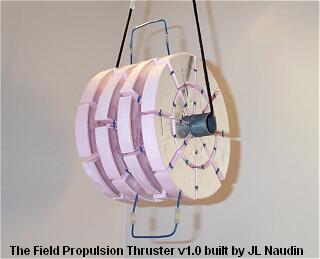 The Serrano's Field
Propulsion Thruster v1.0
The Serrano's Field
Propulsion Thruster v1.0
![]() Email : JNaudin509@aol.com
Email : JNaudin509@aol.com
Return to the JLN Labs home page